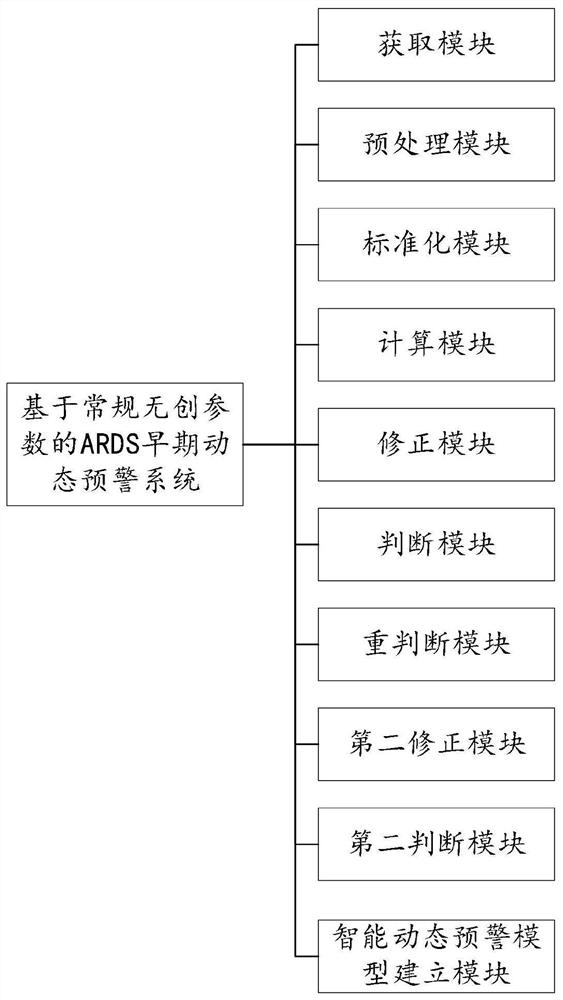A method and system for early dynamic early warning of ards based on conventional non-invasive parameters
A dynamic early warning and parameter technology, applied in medical data mining, patient-specific data, health index calculation, etc., can solve the problems of occupying large medical human resources, high medical expenses, limited low-frequency data, etc., and expand the scope of application , Good disease early warning ability, and the effect of reducing the cost of use
- Summary
- Abstract
- Description
- Claims
- Application Information
AI Technical Summary
Problems solved by technology
Method used
Image
Examples
Embodiment Construction
[0079] Exemplary embodiments of the present disclosure will be described in more detail below with reference to the accompanying drawings. While exemplary embodiments of the present disclosure are shown in the drawings, it should be understood that the present disclosure may be embodied in various forms and should not be limited by the embodiments set forth herein. Rather, these embodiments are provided so that the present disclosure will be more thoroughly understood, and will fully convey the scope of the present disclosure to those skilled in the art.
[0080] The present invention designs an ARDS early dynamic early warning method based on conventional non-invasive parameters, such as figure 1 shown. When the patient enters the ICU and is monitored throughout the whole process, the method can provide early dynamic early warning of ARDS on multiple time scales based on conventional non-invasive parameters, so as to predict the possibility of ARDS in the future of the patie...
PUM
 Login to View More
Login to View More Abstract
Description
Claims
Application Information
 Login to View More
Login to View More - R&D Engineer
- R&D Manager
- IP Professional
- Industry Leading Data Capabilities
- Powerful AI technology
- Patent DNA Extraction
Browse by: Latest US Patents, China's latest patents, Technical Efficacy Thesaurus, Application Domain, Technology Topic, Popular Technical Reports.
© 2024 PatSnap. All rights reserved.Legal|Privacy policy|Modern Slavery Act Transparency Statement|Sitemap|About US| Contact US: help@patsnap.com










